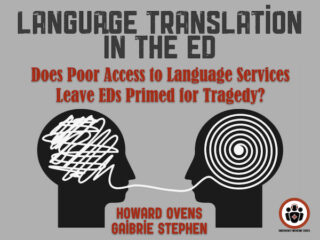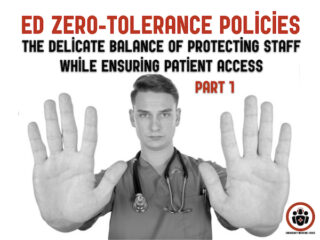WTBS 19 Does Poor Access to Language Services Leave Emergency Departments Primed for Tragedy?
In this guest Waiting to Be Seen blog by Dr. Gaibrie Stephen, we discover the evidence supporting a more rigorous and professional approach to language translation services as well as some practical available options. If a lack of translation can have tragic consequences, the obligation of an ED to set a new and better standard of care for communicating with patients is now painfully clear...










